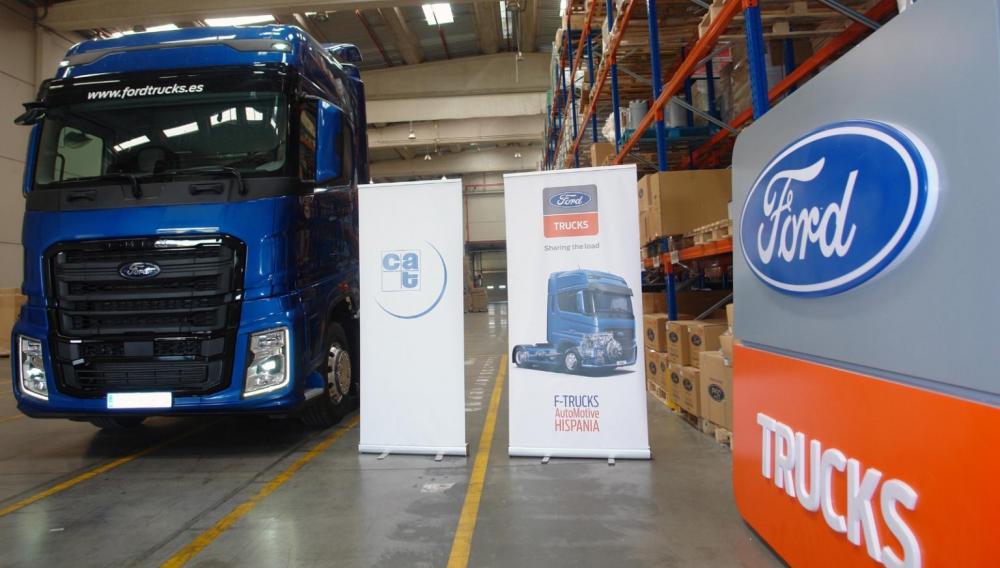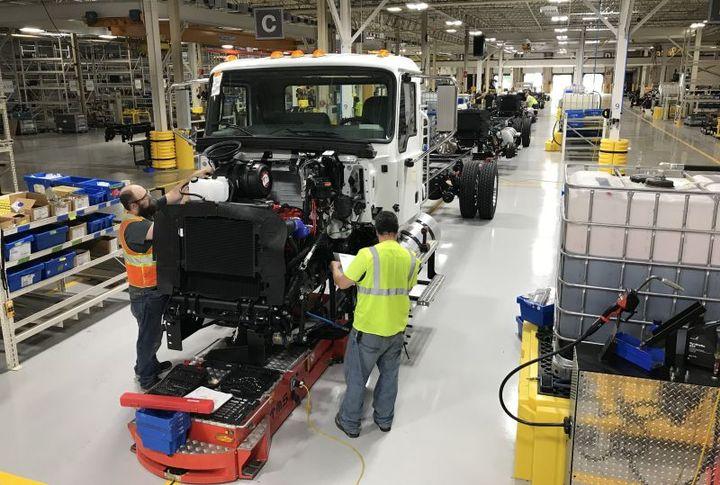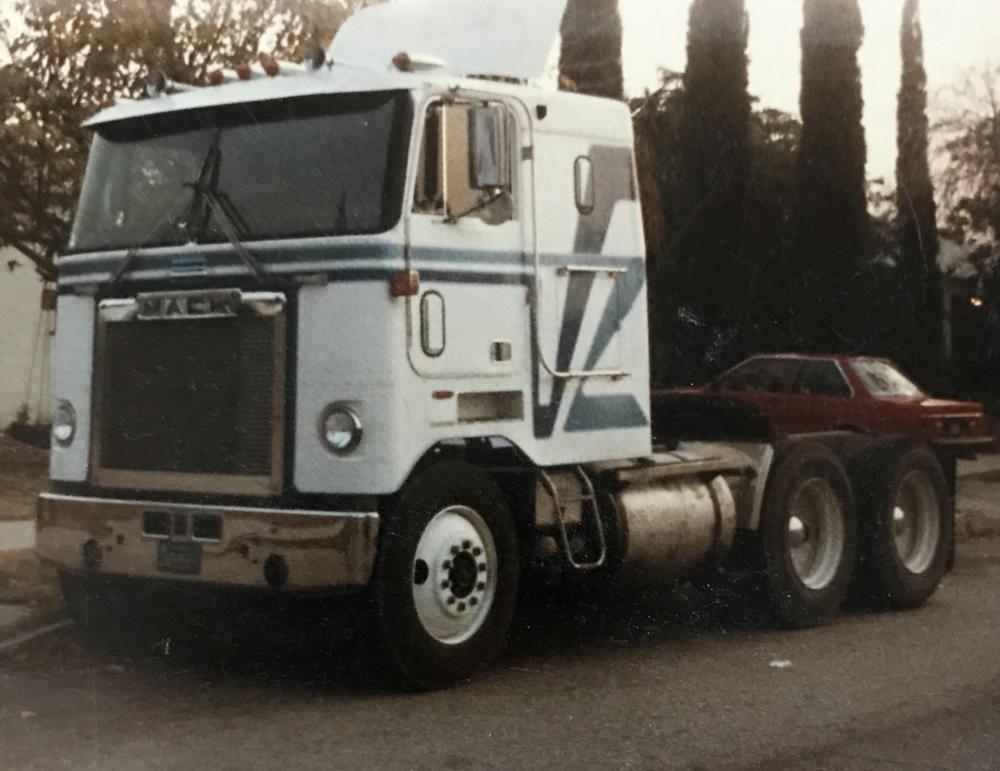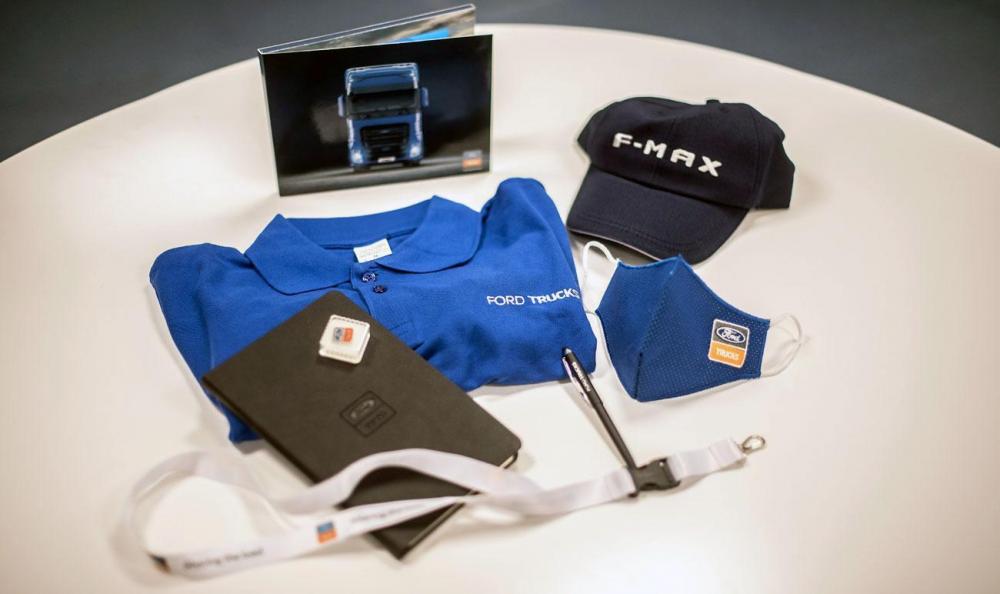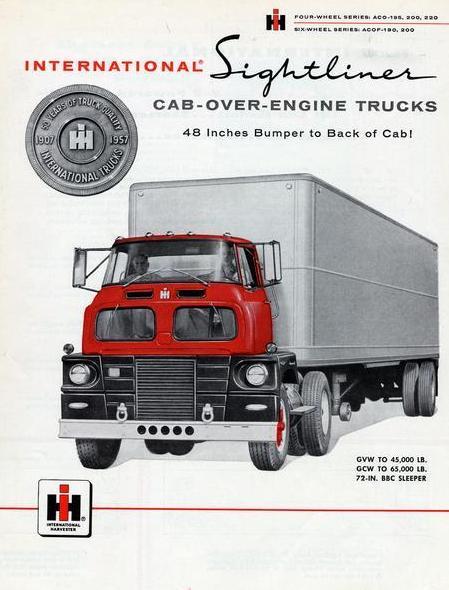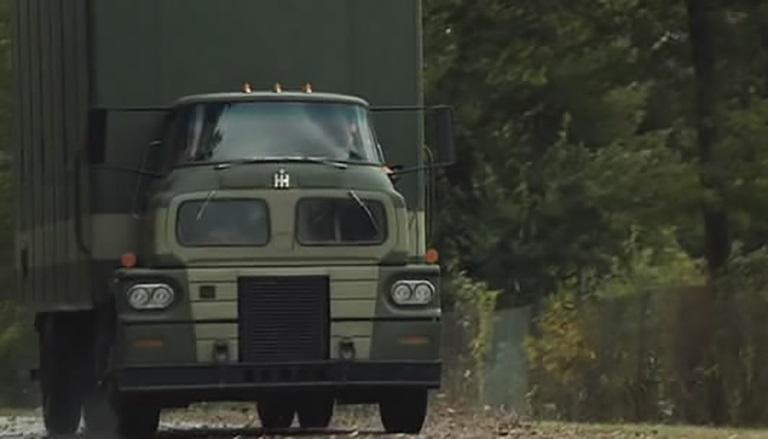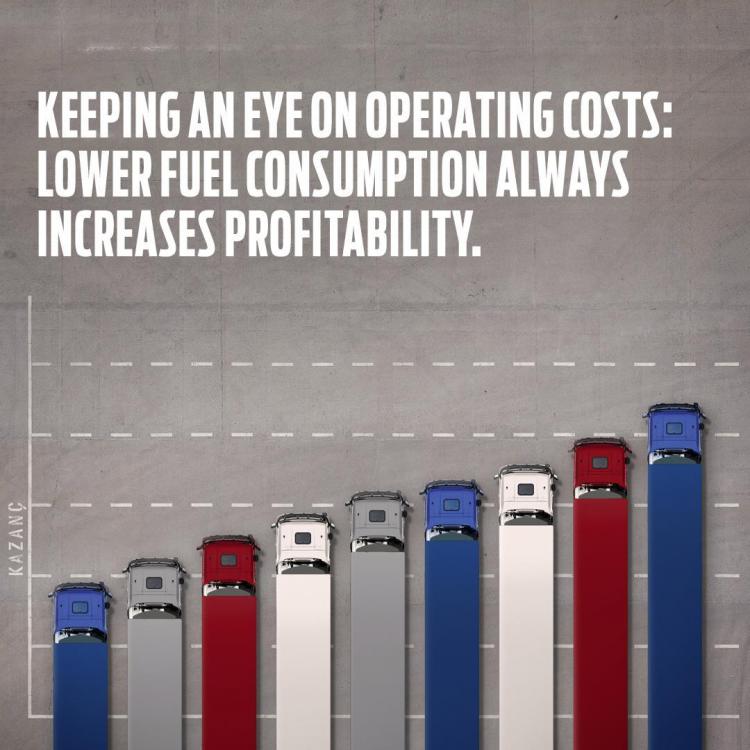
kscarbel2
Moderator-
Posts
18,935 -
Joined
-
Days Won
114
Content Type
Profiles
Forums
Gallery
Events
Blogs
BMT Wiki
Collections
Store
Everything posted by kscarbel2
-
Ford’s Attempt to Turn Corner Boosted by Earnings Beat Keith Naughton, Bloomberg / July 30, 2020 Ford Motor Co. posted much better-than-expected results for the latest quarter but projected a full-year loss as it attempts to pull off a restructuring amid the carnage caused by the coronavirus pandemic. The automaker said Thursday its operating loss in the second quarter was less than half the $5 billion deficit it had predicted, due mainly to undiminished demand for its sport utility vehicles and trucks despite springtime factory and showroom closures. Ford’s adjusted loss of 35 cents a share was considerably better than the $1.18 per share loss analysts forecast. The economic crisis caused by the viral outbreak hit Ford two years into an $11 billion global reorganization that leaves Jim Hackett, the company’s chief executive officer, little room for error amid an extended earnings slump. It also comes as the automaker prepares to roll out three critical new models aimed at reversing its fortunes: the electric Mustang Mach-E, the revived Bronco SUV and a redesigned version of its top-selling F-150 pickup, its most profitable model. The virus shutdown at Ford plants delayed those launches by about two months. Ford’s $1.9 billion loss before interest and taxes compares with crosstown rival General Motors’ second quarter loss of $536 million. In the third quarter, Ford is projecting an adjusted profit of $500 million to $1.5 billion. For the full-year, it expects to post an adjusted loss. Ford ended the second quarter with more than $39 billion in cash on hand, including $10 billion in new debt. Ford said it has repaid almost half of its $15.4 billion in revolving credit and expects to maintain or exceed a cash balance of $20 billion for the rest of 2020 “even if global demand declines or there is another major wave of pandemic-related plant closures.”
-
Americans will be living with the coronavirus for decades Dr. Michael Osterholm, epidemiologist at the University of Minnesota This interview is the first in a series of conversations MarketWatch will conduct with some of the leading voices in the U.S. on the COVID-19 pandemic On Jan. 20, just nine days after Chinese health authorities published the DNA sequence for a new coronavirus that had sickened dozens of people in China, Dr. Michael Osterholm, an epidemiologist at the University of Minnesota, wrote in an email: “I’m certain this will cause our next pandemic.” The next day the Centers for Disease Control and Prevention (CDC) confirmed the first U.S. case of someone infected with what became known as COVID-19. Since then, as outbreaks intensified and the virus spread to Europe, and then the Americas, Osterholm, a flu expert with experience working in the CDC who heads up the Center for Infectious Disease Research and Policy, has become one of the nation’s leading voices on the pandemic, weighing in on everything from masks to contact tracing. Osterholm’s viewpoint is sobering. The 67-year-old expects the novel coronavirus to be present for the rest of his life. He doesn’t believe the wave theory (a first wave, a lull, following by other waves) will apply to this pandemic. “That’s not what’s happening here,” he told MarketWatch in an interview. MarketWatch: One of the things I’m pretty interested in is the talk and the hope around a vaccine. Do you think we have misconceptions about what it means when we have a vaccine? Michael Osterholm: Everyone is looking at the vaccine as being a light switch: on or off. And I look at it as a rheostat, that’s going to take a long time, from turning it on from its darkest position to a lightest position. If you’re anticipating a light switch, you’re going to be concerned, confused, and in some cases very disappointed in what it might look like in those first days to months with a vaccine. MarketWatch: I saw a piece in The Atlantic this week and I thought they positioned it well. They described it as the beginning of the end. Osterholm: It won’t be. We will be dealing with this virus forever. Effective and safe vaccines and hopefully ones with some durability will be very important, even critical tools, in fighting it. But the whole world is going to be experiencing COVID-19 ‘til the end of time. We’re not going to be vaccinating our way out of this to eight-plus billion people in the world right now. And if we don’t get durable immunity, we’re potentially looking at revaccination on a routine basis, if we can do that. We’ve really got to come to grips with actually living with this virus, for at least my lifetime, and at the same time, it doesn’t mean we can’t do a lot about it. MarketWatch: Do you think we’re going to see some of these vaccines fail in clinical studies? Osterholm: One of the challenges we have is: what do we mean by fail? What’s the definition? Some people right now have a view that any vaccine that isn’t like the measles vaccine is going to be a challenge, meaning they’ve got to work 93% to 98% of the time. I don’t think there’s any sense that that’s going to happen with this vaccine. That doesn’t mean that there isn’t going to be an effective vaccine at 50%, 60% or 70%. We have to keep watching for safety signals. We have to make sure that over time we can assure the public with open and transparent data that: This is what you can expect in terms of reactions, this is what might have any long-term complications. MarketWatch: When it comes to how medical information is being disseminated, there have been a lot of changes. You’ve done some peer review and work with journals. Do you think some of these preliminary scientific writings are being shared with the public too soon? Osterholm: Oh, absolutely. We’re drinking from a fire hose right now in terms of new information. You can make the case that’s important because we’re in a position to learn things that could have a very real impact on patient outcome and therefore getting the data out are critical. But then there’s a downside to that, too, because with that comes an increasing amount of marginal if not potentially erroneous information. MarketWatch: Do you think we’re going to see distinct waves of outbreaks in the U.S.? Osterholm: No, no. They’re not waves. We’ve never had a pandemic due to coronavirus before. We’ve had influenza pandemics. With an influenza pandemic, you do get true waves, meaning you get a first big peak of cases, then the numbers come down substantially without any human intervention. It’s nothing we do. We’ve never understood why that happens, and then a few months later you get a second wave. At this point, that’s not what’s happening here. This is like a forest fire, full steam ahead. And wherever there’s human wood to burn, it’ll do it. What we see, though, are these spikes in cases where human mitigation strategies ended, or they’re not adhering to them ... This is just one constant pressure that’s occurring. MarketWatch: And human mitigation [like mask wearing or social distancing] declines? Osterholm: Right. And everyone’s expecting it. Look at Hong Kong, which is doing an outstanding public health follow up, and yet they are still having a problem. Think of this like a big forest fire. If you’re in the way of it, you’re going to get burned. The best we can do is try to put out as much as we can. But even knowing that, if you just suppress it, it’s going to come back. The embers are still there because we never really put it out. MarketWatch: What do you think the biggest failure in the U.S. response has been? Osterholm: We’ve failed because we declared victory over the virus when we had no business doing so. This virus has been poised to be transmitted in our communities, and we thought we had done enough to get it down. It’s like a fire crew. “I only put out half the forest fire but you know, I put out half so we’re done.” And then look what happened. It’s burned more acres since we gave up than it did before we gave up. MarketWatch: What was that moment when you realize the seriousness of this virus? Osterholm: I just could tell based on all the data we had, and it was one of those “oh my God” moments. No one knew for certain how a coronavirus is going to act, and, unfortunately, it’s fulfilling all my worst nightmares. One challenge that is yet to really be understood is just what kind of durable immunity we get from infection and vaccine. We’re making assumptions right now that’s going to last. If it doesn’t, that really complicates things. If you have double, triple, and quadruple jeopardy with this virus, that’s not a pretty picture. MarketWatch: Are we getting going to get close to [herd immunity] by a vaccine? Or is the goal to keep as many people safe as possible? Osterholm: Again, it goes back to the question we just discussed: is there durable immunity? Because herd immunity is based on the concept that once you have immunity, it stays. One of our goals has been to postpone as many cases we can until the vaccine is available and use that as your means for getting 50% to 70% of the population protected. But we don’t know what immunity means for either natural disease or vaccine. Herd immunity is still, in some ways, that theoretical state to get to but we’re not sure we ever will.
-
Ford Trucks International / July 29, 2020 Ford Trucks debuts, in collaboration with Groupe CAT, a multinational company specializing in automotive distribution, its spare parts warehouse in Madrid. More than 10,000 m2 and 18 people dedicated to providing agile and efficient response to the needs of our customers. We don't stop so you don't stop. #PoweredByFordTrucks #SharingTheLoad .
-
Volvo Preps for Full Mack MD Production Heavy Duty Trucking (HT) / July 27, 2020 Sweden-based Volvo Group recently began initial production of its all-new Mack MD Series of medium-duty trucks at its Roanoke Valley Operations (RVO) facility in the Roanoke Valley, Virginia. Full production of the Mack MD Series is scheduled to begin September 1. .
-
General Motors slides to a loss on falling demand for cars in the US Financial Times / July 29, 2020 General Motors fell to a loss in the second quarter, dragged down by a collapse in profits and falling sales from its traditionally lucrative North American operations. Global sales at the Chevrolet and Buick owner halved to $16.8bn in the quarter, with a net loss of $758m, compared with a $2.4bn profit in the same period in 2019. Its North American arm posted a $101m net loss for the quarter, compared with a $3bn profit in the same period a year earlier. US sales of Chevy trucks fell from 248,000 to 176,000, while deliveries from its GMC truck brand slid from 153,000 to 100,000. Both units are significant profit drivers at the business. Total US vehicle sales fell from 747,000 to 492,000, while global sales dropped from 1.9m to 1.5m. Both its international arm and its self-driving Cruise business also lost money, while profits from its financial division halved from $536m to $226m. The company managed to eke out a $294m profit in the first quarter, buoyed by truck sales in the US.
-
The Wall Street Journal. /. July 28, 2020 Eastman Kodak Co. has won a $765 million government loan under the Defense Production Act, the first of its kind. The purpose: to help expedite domestic production of drugs that can treat a variety of medical conditions and loosen the U.S. reliance on foreign sources.
-
Paul, Sears (management) failed to evolve forward, particularly since 1990 when it became critical to do so. As others have said, they were ahead of their time for decades (though ironically they might not have realized it, not knowing of a Amazon online future awaiting).
-
Peterbilt Motors Co. Press Release / July 22, 2020 A cornerstone of the Peterbilt brand is our commitment to providing customers with the most reliable and highest quality products on the road today. Peterbilt continues to make significant investments in our factories to increase capacity and utilize innovative tools and technologies to ensure we have the most advanced manufacturing facilities in the industry. Leon Handt, Peterbilt Assistant General Manager of Operations, explains how building the best trucks also requires teams of highly-skilled employees who are dedicated to Enduring Craftsmanship and take great pride in delivering outstanding quality to our customers. .
-
GM reverses plan to cut shift at pickup plant Hannah Lutz, Automotive News / July 28, 2020 General Motors has reversed its plan to temporarily cut the third shift at its midsize pickup plant in Wentzville, Missouri, possibly opting to transfer laid-off workers from other states to the plant instead. GM confirmed plans to cut the third shift on July 11 because of worker absenteeism as cases of COVID-19 in Missouri increased. GM told Automotive News at the time that there was enough demand for three shifts. The automaker was working on a staffing plan to resume a three-shift schedule as soon as possible. More than two weeks later, cases of the coronavirus in Missouri continue to climb, reaching 37,375 as of July 26, according to Johns Hopkins. "Transfers from other GM locations along with the strategic use of temporary employees could be part of the Wentzville staff plan," spokesman Dan Flores told Automotive News on Tuesday. CNBC on Thursday reported GM's decision to keep the third shift. The decision to lay off about 1,250 workers was purely driven by high absenteeism and not related to low demand for the Chevrolet Colorado and GMC Canyon that are built at the plant, GM said earlier this month. In addition to the Colorado and Canyon, the Wentzville plant, which employs 4,100 salaried and hourly workers, builds the Chevy Express and GMC Savana full-size commercial vans. Lansing cases GM also confirmed cases of the virus among employees at two Michigan plants last week but said the positive cases did not affect production. One worker tested positive at GM's Lansing Delta Township assembly plant, after being exposed outside of work. Based on contact tracing, no one else in the plant will have to quarantine, said Flores. At GM's nearby Lansing Grand River plant, two workers tested positive after being exposed to the virus outside of work. As of Friday afternoon, GM was in the process of contact tracing at the plant.
-
https://www.wattstruckcenter.com/portal/cab/windshields/ http://chicagomackinfo.tripod.com/windshields.htm
-
Is the threat to Ford's Canada assembly plant real? Dana Flavelle, Automotive News / July 27, 2020 TORONTO -- The union local representing workers at Ford of Canada’s Oakville assembly plant says this isn’t the first time it will go into contract negotiations fighting for a new product, and potentially the plant’s survival. “We’ve been here before,” said Mark Sciberras, president of Unifor Local 707, which represents nearly 4,200 hourly employees there. In late 2006, the Freestar minivan, a rebranded version of the popular Windstar, was coming to an end, but the plant would benefit from a C$1 billion ($750 million U.S.) investment to produce the new Edge, said Sciberras. The Edge would go on to be a big seller in the growing market for crossover utility vehicles, securing the plant’s future for another 15 years. But this time it’s far from clear what might happen following reports that Ford is scrapping the next-generation Edge, leaving the Oakville plant with no new products after 2023. Industry observers say Ford, which has declined to confirm or deny the forecast by AutoForecast Solutions, could be floating a trial balloon ahead of fall contract talks with Unifor. But it’s also possible the company might be paving the way to pull the plug on its last remaining vehicle assembly plant in Canada. “Ford has, historically speaking, had a strong presence in Canada, but so did General Motors,” said Dimitry Anastakis, a professor with the University of Toronto’s Rotman School of Management, referring to GM’s decision to close its largest Canadian assembly plant, in Oshawa, in 2019. “But we’re in a COVID crisis and crises tend to accelerate long-term trends. And the trend in Canada has been to reduce the [auto manufacturing] footprint.” The global auto industry is facing unprecedented challenges to produce automated, driverless, electrified vehicles while a global pandemic has thrown a massive wrench into sales and profits, said John Holmes, a professor emeritus at Queen’s University in Kingston, Ontario. Cash burn “The capital requirements for the EV, let alone the autonomous stuff, are horrendous. And given they’re all burning through a lot of cash during COVID, it’s not surprising [if] they’ve postponed or canceled some of the programs they were previously committed to,” Holmes said. Ford has a long history in Canada, starting in 1904 when Henry Ford signed a deal with Gordon McGregor of Walkerville Wagon Works, now in Windsor, Ontario, to produce Ford-branded vehicles for the Canadian market and beyond, taking advantage of Canada’s favorable trade relations with the British Empire. The company would grow on the early success of the Model T car. Unlike other branch-plant automakers, Ford of Canada had its own shareholders and made its own decisions about which models to build. “Cars built by Canadians for Canadians,” the ad in the Toronto Daily Star proclaimed in May 1953 when Ford moved its assembly operations and head office to the eastern edge of Oakville to be closer to the growing Toronto market. Though it would never achieve the massive scale of GM’s assembly plant in Oshawa, Ford Oakville has ranked among the top 10, sometimes top five, largest automakers in Canada, said Brendan Sweeney, managing director of the Trillium Network for Advanced Manufacturing. “This is a very important part of Canada’s manufacturing ecosystem. And certainly, a very important part of Ontario’s economy and the [Greater Toronto Area],” Sweeney said. Auto pact beneficiary Along with the rest of the Canadian auto manufacturing industry, Ford benefited from the signing in 1965 of the Auto Pact between Canada and the United States, which imposed local content requirements for vehicles to enjoy tariff-free status. At its peak, the Oakville operations, including a separate truck plant built in 1966, employed between 7,000 and 8,000 people. But that all changed after Canada and the U.S. added low-cost producer Mexico to a broader North American Free Trade Agreement in 1994 and the Auto Pact was declared illegal by the World Trade Organization in 2001. The southern U.S. states and Mexico began competing for new automotive assembly plants, offering generous incentives, free land, tax breaks and lower labor costs. Global automakers began shifting production further south. In 2004, Ford closed the Oakville truck plant, at a cost of 1,200 jobs. “That was a big blow for us,” Unifor’s Sciberras said. The Canadian and Ontario governments responded with incentives aimed at stemming the exodus. Ford was among the beneficiaries. Since 2005, Ford has invested almost C$3.5 billion ($2.6 billion U.S.) in its Canadian operations while the two levels of government contributed more than C$639 million, according to the automaker. But incentives were never enough to prevent a wave of auto plant closures that swept through the province. In 2011, Ford announced it would close the Talbotville assembly plant, near St. Thomas, which made the Crown Victoria and Mercury Grand Marquis models. Bailout rebuffed Ford avoided becoming part of the massive government bailout during the financial crisis of 2008-09 that saw the Canadian and Ontario governments invest C$14 billion in GM and Chrysler to keep them from going out of business. The deal was tied to Canadian production commitments that expired in 2016. “So they don’t have an obligation with either the federal or provincial governments. But they do have a corporate citizen obligation. They’ve been in Canada more than a century. The Ford people are very sensitive about their history in Canada,” said the University of Toronto’s Anastakis. He added: “If Oakville does close, that’s going to be really bad news for the Canadian auto industry.”
-
Briggs & Stratton files chapter 11 bankruptcy
kscarbel2 replied to kscarbel2's topic in Odds and Ends
The Kawasaki FH721V used on Deere X500's over the 2006-2015 period, for example. They never wear out if you maintain them properly. And now you can get the X590 with electronic fuel injection (EFI) equipped Kawasaki FS730 engine. No choke, it starts like a car. -
Iranian R-model
kscarbel2 replied to Vladislav's topic in Antique and Classic Mack Trucks General Discussion
-
Ford Trucks Spain / July 27, 2020 These have been a few months of intense work, in which the staff of The ford Trucks dealers in Spain have worked in the most difficult conditions that we could imagine. All focused on the objective of offering the best service to our customers, despite the circumstances. Ford Trucks Spain has given each and every one of these heroes a Ford Trucks Pack like this, and we want to take advantage of this short post to recognize the work of all members of our Family. The strength of this brand is the strength of your entire team and we are proud of each and every one of them. THANK YOU FAMILY SO MUCH! HenryTrucks,S.L Caysercas, S.L. Mintegui Automoción Himayma La Coruña Vehinva Grupo Terramovil Almerisan C. V. Castejon Grupo Roque Nublo and Trucks Moes #PoweredByFordTrucks #SharingTheLoad
-
Repair parts shortages stymie Ford dealers Michael Martinez, Automotive News / July 27, 2020 As the coronavirus pandemic continues to squeeze dealer inventory and threaten vehicle production, retailers are grappling with another issue: a shortage of repair parts for their service departments. The backlog has affected a number of Ford dealers who say they're waiting weeks, and in some cases more than a month, for parts needed to fix older-model Escape crossovers and Fusion sedans. In April, Ford issued a technical service bulletin for coolant leaks into the cylinder head of 1.5-liter EcoBoost engines in 2017-19 Escapes and 2014-19 Fusions. The automaker instructed retailers to replace the short block and gasket head. Dealers say the parts for that repair are taking weeks to arrive as vehicles pile up in their service centers. Ford acknowledges delays this spring but claims the situation has since been resolved. "There were disruptions in parts supply in early May due to supplier closures caused by COVID-19," Ford said. "Upon reopening, parts production and delivery was expedited, resolving shortages by late June. Ford is not aware of any significant parts delays currently impacting dealer ability to repair these engines." But dealers say the issue hasn't gone away. One service manager, who asked not to be identified discussing internal matters, called the situation a "nightmare" and said the store has a half-dozen Escapes sitting in the shop awaiting repairs. A second dealership official said enough customers had come in with the problem that the person raised it on a 20-group virtual meeting and heard similar responses from peers. An employee at a third dealership said the store cut a five-figure check in June to a rental company so that affected customers could have temporary transportation while waiting for a fix. Tim Hovik, a member of the Ford council and owner of San Tan Ford in Gilbert, Arizona, said his store has experienced parts delays, although he said they weren't limited to any particular models.
-
https://tradingeconomics.com/united-states/imports-by-country
-
Briggs & Stratton files chapter 11 bankruptcy
kscarbel2 replied to kscarbel2's topic in Odds and Ends
The genuine Honda engines have come down in price over the years to become very competitive. And the Honda-copy engines from China have very high quality. And then there's Kawasaki used by Deere and others. Briggs failed to evolve with a changing environment and remain competitive, much less a leader. It's a shame, as they had brand recognition. I lost all faith in the company when they told customers to stop changing oil......................https://www.briggsandstratton.com/na/en_us/innovations/push-mowers/just-check-and-add-technology.html -
Agreed. But I fear the taxpayer will bear the cost of scrapping the ship.
-
International "Sightliner" Makes Movie Debut
kscarbel2 replied to kscarbel2's topic in Trucking News
-
Navistar Trucks Press Release / July 24, 2020 We're rolling out the red carpet today in honor of the International Harvester "Sightliner" featured in the movie "Real Steel." .
BigMackTrucks.com
BigMackTrucks.com is a support forum for antique, classic and modern Mack Trucks! The forum is owned and maintained by Watt's Truck Center, Inc. an independent, full service Mack dealer. The forums are not affiliated with Mack Trucks, Inc.
Our Vendors and Advertisers
Thank you for your support!



